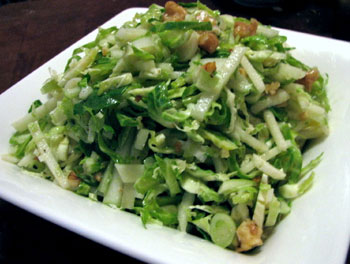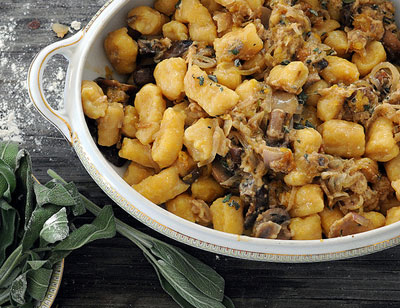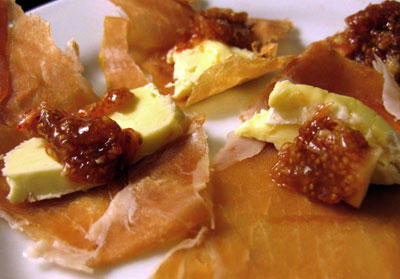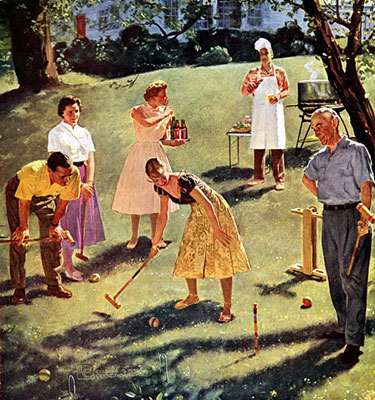 This brussels sprout salad recipe is perfect for lovers and haters of the little cabbage-looking sprout. The flavor is so mild, that it barely has any cabbage flavor. Because the brussels sprouts are shredded, guests might not even know they are the basis for the dish. Sweet apples and toasted nuts add complexity and crunch. It's a nice balance of sweet, salty, crunchy, tangy with just a touch of richness from the walnuts and the oil.
This brussels sprout salad recipe is perfect for lovers and haters of the little cabbage-looking sprout. The flavor is so mild, that it barely has any cabbage flavor. Because the brussels sprouts are shredded, guests might not even know they are the basis for the dish. Sweet apples and toasted nuts add complexity and crunch. It's a nice balance of sweet, salty, crunchy, tangy with just a touch of richness from the walnuts and the oil.
Brussels sprout slaw is yet another recipe that was created out of "whatever was in the house." I will admit, laziness that keeps me from going to the store in turn inspires new recipes on a regular basis. In this case I had one apple and a bag of brussels sprouts. Back from a weekend out of town, I had no desire to go shopping.
My original plan was to roast or saute them, but raw was a refreshing change from the expected. You could probably slice the brussels sprouts very thinly with a knife, but it's much easier to do in a food processor or with a mandolin. You do have a mandolin, right? Cheap Japanese ones are fine, just watch your fingers!

 In our house, "Gnocchi" means "I love you".
In our house, "Gnocchi" means "I love you". Is there some sort of cheap plastic switch nestled deep inside my brain that gets reset each time the season's change? I swear my friends, I become some automated eating robot that's completely incapable of making my own choices when it comes to food. Take Autumn. It wasn't some gradual ease into the season at my house but a very! drastic! change! of! the! seasons! I began snubbing the grill and light summer veggies almost immediately in favor of the tastes that currently rule my existence: caramelly, sticky, roasted, savory, smoky, braisey, deep and dark. And you know what? I couldn't be happier.
Is there some sort of cheap plastic switch nestled deep inside my brain that gets reset each time the season's change? I swear my friends, I become some automated eating robot that's completely incapable of making my own choices when it comes to food. Take Autumn. It wasn't some gradual ease into the season at my house but a very! drastic! change! of! the! seasons! I began snubbing the grill and light summer veggies almost immediately in favor of the tastes that currently rule my existence: caramelly, sticky, roasted, savory, smoky, braisey, deep and dark. And you know what? I couldn't be happier. The best appetizers are full of flavor, fun to look at, and, ideally, take very little effort to prepare. Vegetable crudites fit those requirements but they aren't exciting.
The best appetizers are full of flavor, fun to look at, and, ideally, take very little effort to prepare. Vegetable crudites fit those requirements but they aren't exciting. Now that we're headin into Fall, it's now time for full-fledged autumn salads.You know, the kind with thick slabs of roasted squash, wedges of spicy persimmons, and robust dressings made with maple syrup and heady herbs such as rosemary and sage.
Now that we're headin into Fall, it's now time for full-fledged autumn salads.You know, the kind with thick slabs of roasted squash, wedges of spicy persimmons, and robust dressings made with maple syrup and heady herbs such as rosemary and sage.
